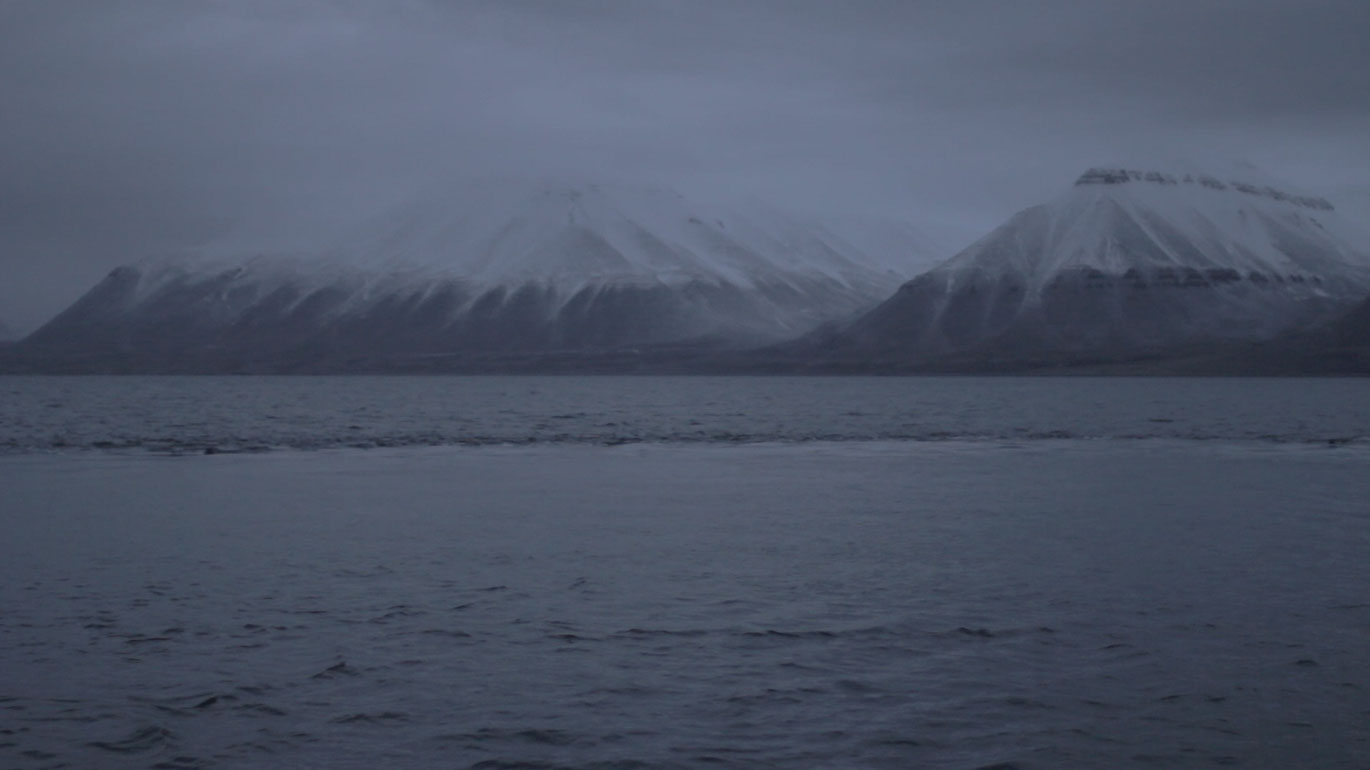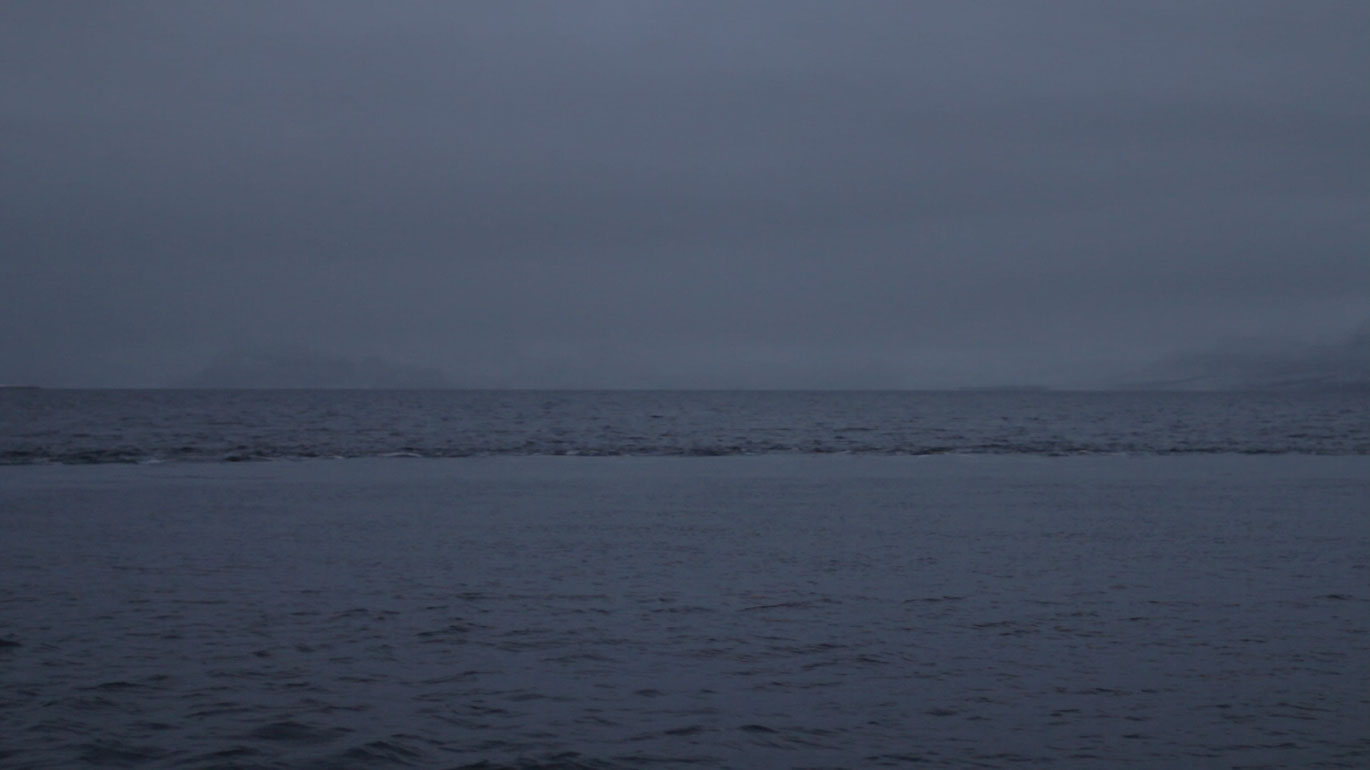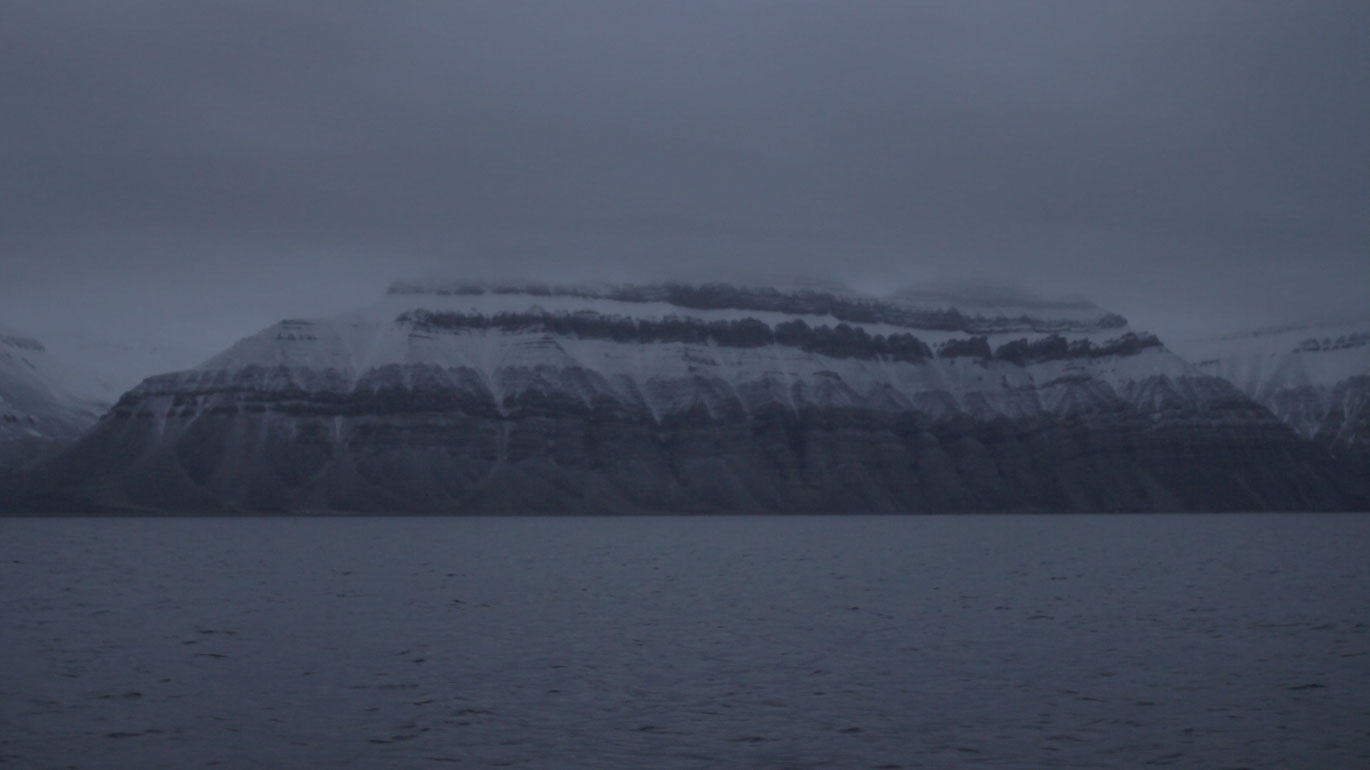High Tide
High Tide hypnotically fixes its gaze on a landscape that’s either prehuman or postapocalyptic, but definitely a timeless arrangement in shades of gray — Lovecraft’s At the Mountains of Madness. Stiff, dry and dully gleaming like damp tar, they tear a hole between the dark, gloomy sea and the grayish sky. As the minutes pass, the gaze itself becomes the focus of attention and Marxt creates a thoroughly insistent presence of the camera’s eye, the frozen rigidity of which produces an infinite number of each filmed movement, no matter how minute. The unfathomable, gloomy elegance of this splashing and rumbling landscape painting — the movement of the waves, the circling of the birds, the lifting of the cloud cover — is followed by an arc shot resembling a brushstroke that tells us about everything we have already forgotten while gazing at the static and precisely framed mountain: the world beyond the image. A moment of complete disorientation is created by the landscape’s sheer endlessness and a relationship between the point of view and the perceived movement of the camera and waves that seemingly cannot be reconciled. In High Tide the film’s two types of movement — in the image and that of the gaze itself — have been carefully separated and placed in succession in an almost didactic manner. At the same time, the film draws a mental line — from the subject of landscapes in Romanticism to the sweeping gaze of someone at an outlook to the filmic image that captures movement. High Tide represents evidence of a landscape and the possibility of virtualizing it in film anywhere in the world (again and again). And also: painting tending to the abstract in motion, the application of a brush (or a tremendously rigid caméra stylo) and the drawing of a line, the time it takes to fill the screen.
(Alejandro Bachmann)
High Tide
2014
Austria, Germany
8 min



